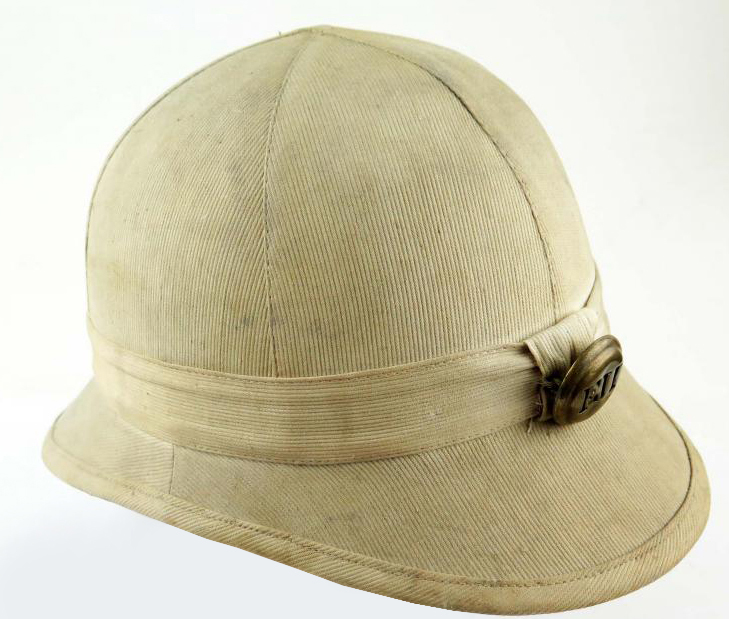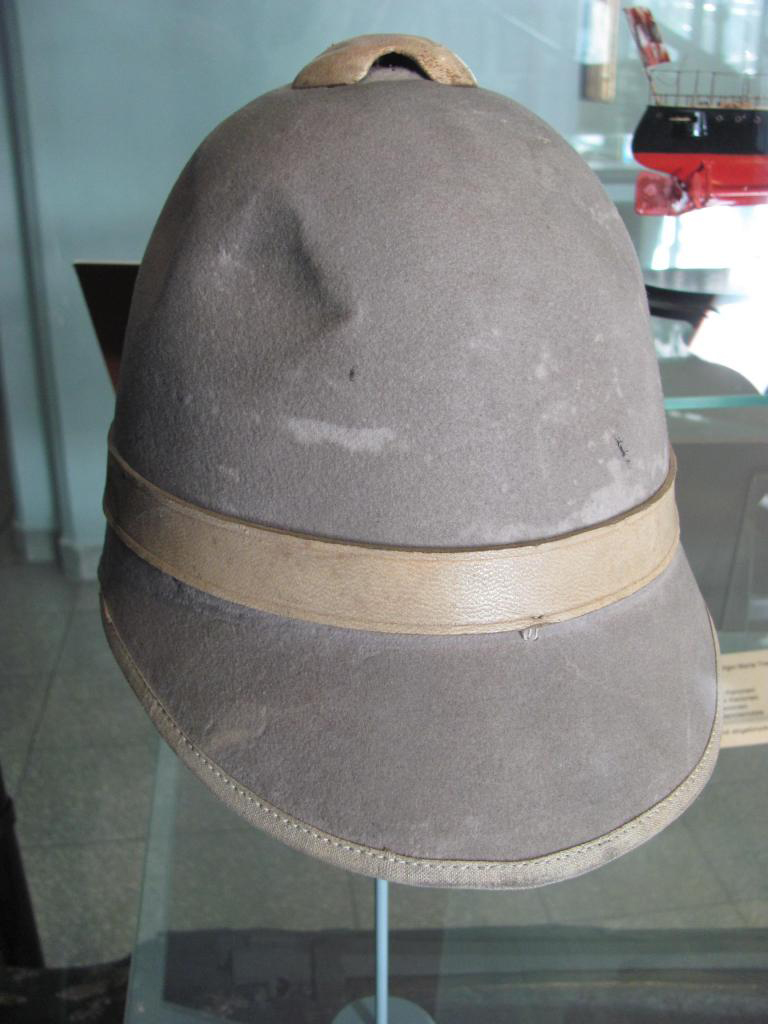 The use of a sun helmet in the Austro-Hungarian army dates back to the Crete expedition of 1897-98 when a quantity of helmets were specially ordered from a company in Vienna. The need for a sun helmet arose again when Austro-Hungarian troops were sent to Palestine in 1915 to aid the Turkish army. With temperatures up to 120ºF in the summer, these 3,000 troops needed a tropical helmet to replace their wool field caps.
The use of a sun helmet in the Austro-Hungarian army dates back to the Crete expedition of 1897-98 when a quantity of helmets were specially ordered from a company in Vienna. The need for a sun helmet arose again when Austro-Hungarian troops were sent to Palestine in 1915 to aid the Turkish army. With temperatures up to 120ºF in the summer, these 3,000 troops needed a tropical helmet to replace their wool field caps.
Two Austrian companies were contracted to make helmets, but many other hat makers also stepped up to provide “private purchase helmets.”Cork was the primary material used throughout Europe in the construction of sun helmets before the outbreak of the war in the summer of 1914. However, as Portugal was the primary supplier of cork, supplies of the material were essentially cut off. As a result Austrian helmets made during the war were primarily constructed of woven straw, or increasingly as the war progressed of stiffened felt.
Such an example – likely one of the few surviving felt helmets – recently has been discovered. This example has cotton gabardine cloth covering a felt body. It is similar in design to the helmets produced for the Crete expedition – and such an example can be found at the Heeresgeschichtliches Museum Wien (Austrian National Army Museum in Vienna).

NCOs and men of the 7th company with new uniform at Suda.
An unusual feature of the recently discovered helmet is that it was made without a top air vent, while the cockade is the early war brass enlisted type. It is sewn on using the two metal loops on the back of the cockade.

This sun helmet is unique in that there is no top ventilator. (Collection of the Author)

While the liner is missing this interior photo shows the felt construction of the helmet body (Collection of the Author)
Two other helmets in the museum’s collection are also made of quilted cotton cloth covering a black or dark gray felt body – suggesting that felt may have been the preferred material among Austrian hat/helmet makers. Both of those helmets, as well as this recently discovered example, have the unusual feature of having the cloth loop that covers the seam of the headband placed in the front of the helmet rather than the more common rear placement.

A felt helmet in the Heeresgeschichtliches Museum Wien (National Army Museum in Vienna). This helmet was used by Austrian units of the international peace force in Crete in 1897/98.

A World War I era sun helmet in the Heeresgeschichtliches Museum Wien. This example is also made of felt and covered in a khaki drill cloth. The fact that so many patterns of Austrian helmets existed is due to the number of private purchase helmets made by various felt hat makers in Vienna
While the Austrians made use of felt, likely because of their long standing felt hat industry that dated back decades before the outbreak of the war, felt helmets were also used ironically by Portugal, and felt would be adopted as a wartime material in the Second World War by both the British and Germans.
This recent discovery is an interesting piece that highlights the use of felt in sun helmet construction.

I wonder if you could help me. I am trying to identify what type of helmet is worn in an antique photo postcard. It is a metal high helmet with a feather on the side and a chin strap. I have photos I can send you . Most of the other photo postcards, I have been able to identify as french military WW1.
Thank you so much in advance,
Linda